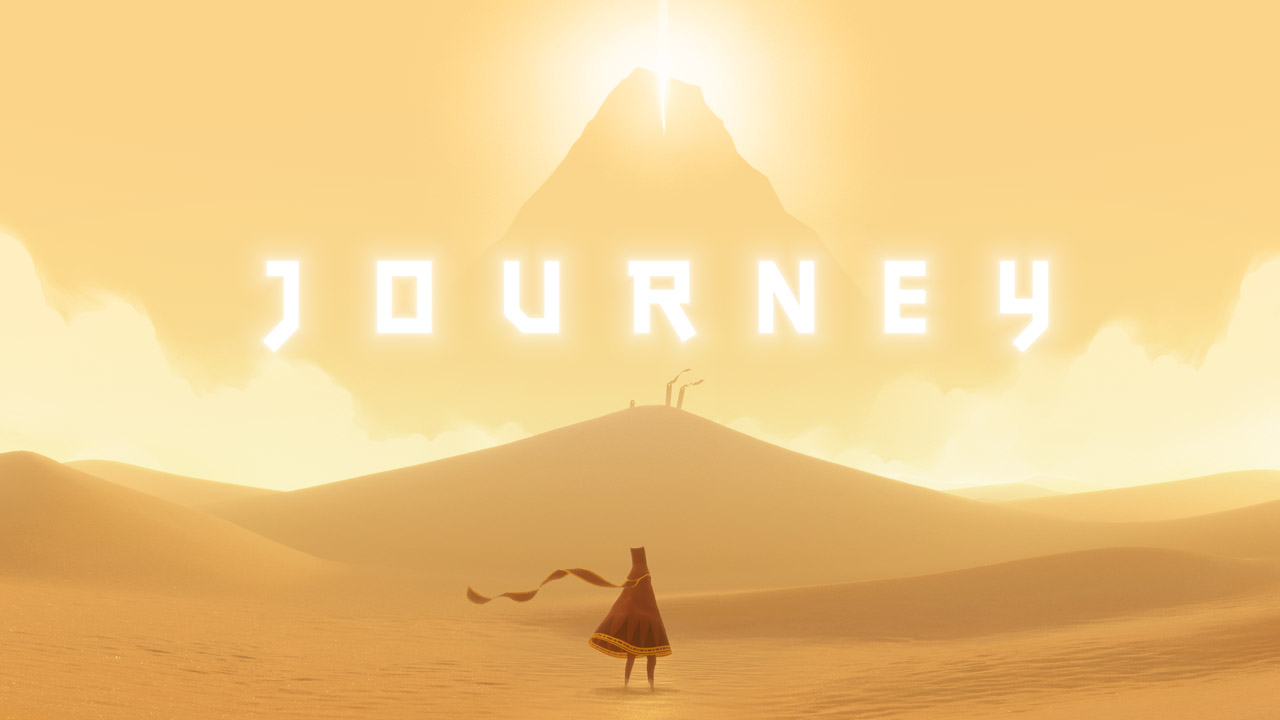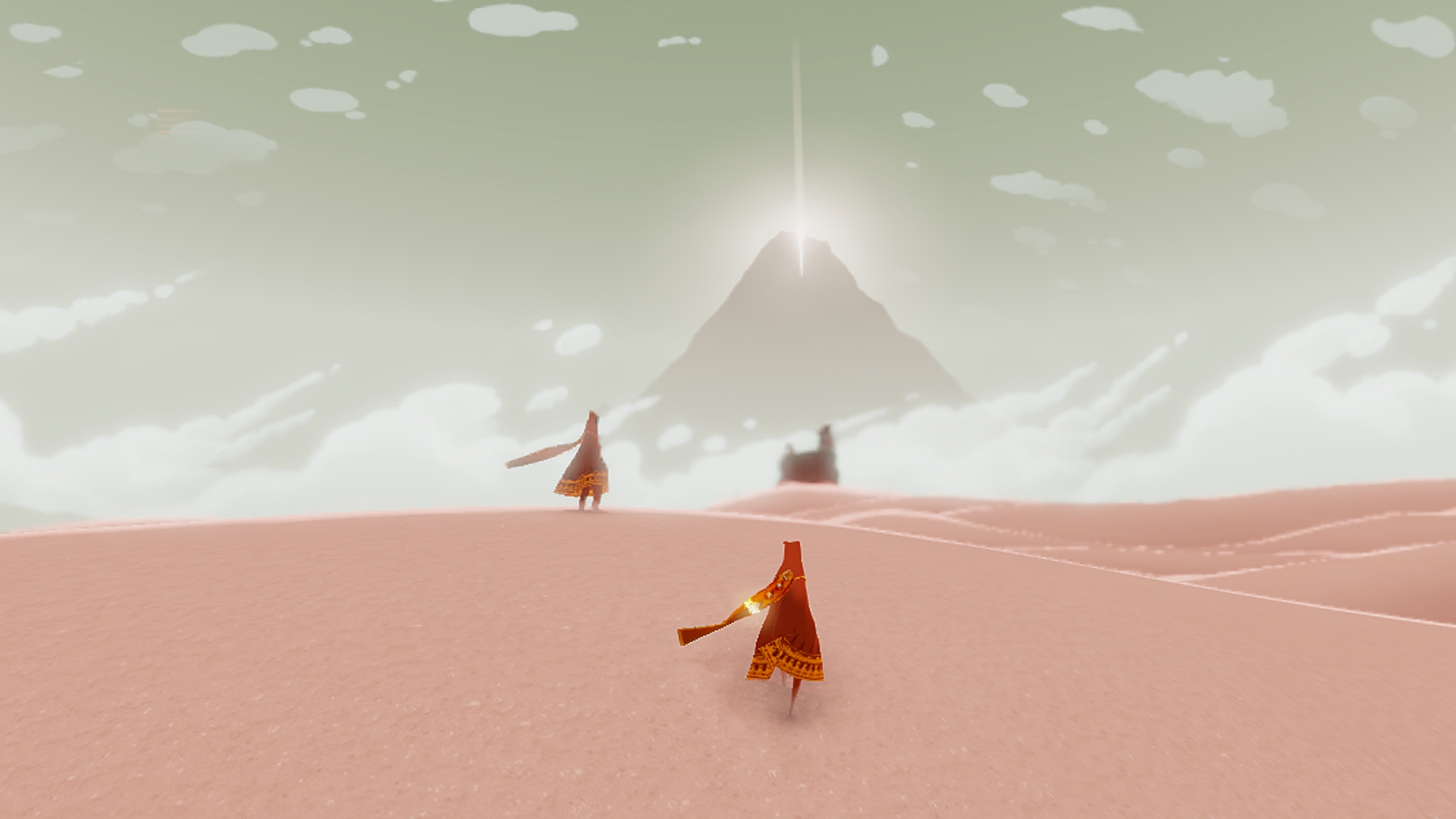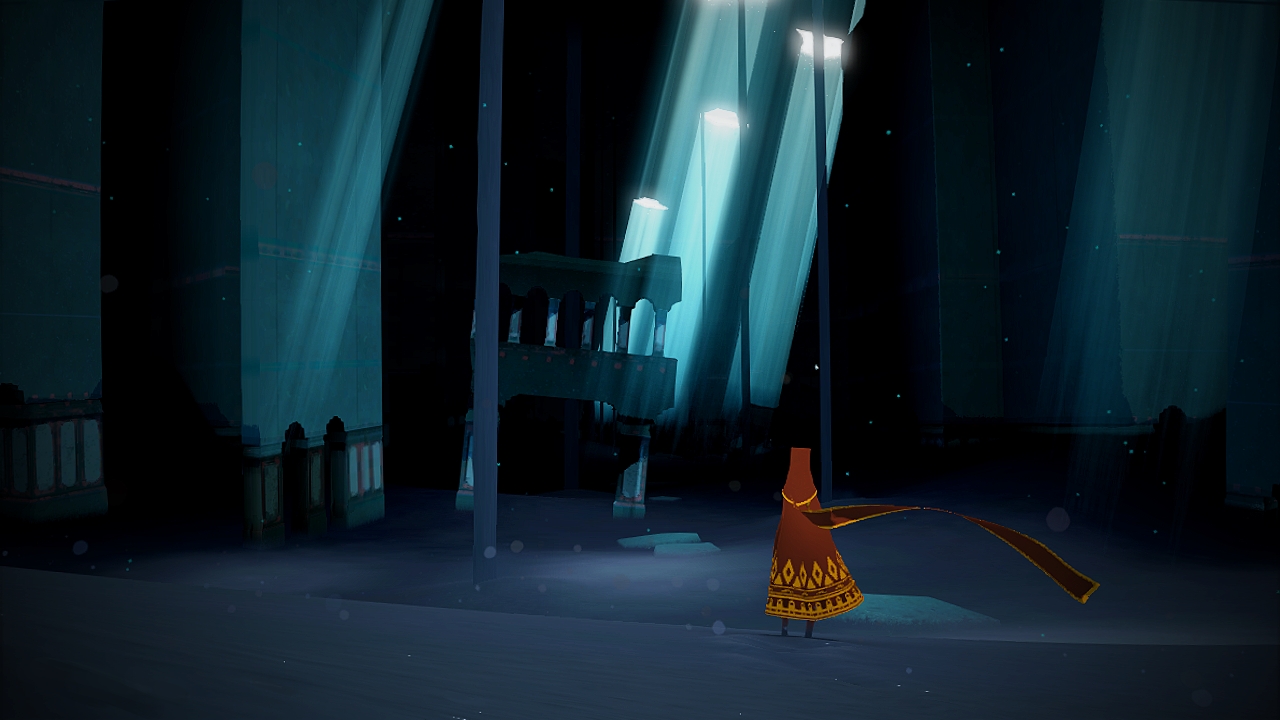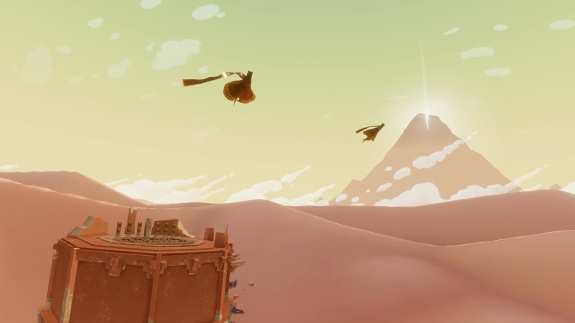
TED Fellow Kellee Santiago has won numerous awards for the video game, “Journey.” Here, we talk to her about her craft.
In recent months, That Game Company’s downloadable PS3 game Journey has swept up an armload of awards — the Game Developers Choice Award for Game of the Year and BAFTA Video Game Award for Best Game Design, to name just two — not to mention a Grammy nomination for Best Original Soundtrack. Company co-founder and TED Fellow Kellee Santiago tells us why she believes this remarkable game is touching so many people’s lives, what it might mean for the future of gaming. Bonus: we ask what’s next on her own horizon.
This is a lot of awards at once, isn’t it? How does it feel?
It’s been totally amazing. We did have a good feeling about Journey: the responses we got last year just from our players was totally overwhelming — people really felt they were able to have personal catharsis through it.
By December, which marks the beginning of game awards season, we’d already been getting so much good attention already — people doing costume plays of the characters, making videos, playing the music on YouTube. So we suspected Journey might get nominated as a stand-out game of the year, just as Flow and Flower, our previous titles, had. But amazingly, it also started showing up in best game of the year categories, as well as best story and best soundtrack and graphics, which put Journey in the same category as what’s known as triple-A games — the video equivalent of blockbuster movies — the high-budget disc titles like Halo 4 and Mass Effect 3, Borderlands 2 and Dishonored. Seeing Journey in along with them was amazing. Then we started winning, which was really unbelievable.
I think it really speaks to a shift happening in the games industry around the idea of who can make a quality game, and what defines a quality game experience. The emphasis wasn’t on hours of gameplay or weapon-changing abilities, but on personal, deep experiences.
Tell us about the game experience.
In the game, the player is a robed figure. You wake up in the desert, and you see this giant mountain in front of you. The goal of the game is to go on this journey to the mountaintop — very much inspired by Joseph Campbell’s hero’s journey structure.
On each level you’re exploring what appears to be a ruined civilization. You’re in this long robe, and when you encounter pieces of cloth, they can give you energy. And that energy you can use to fly, not infinitely, just for short periods. And you can build upon your ability to fly. But the idea is that cloth is really the only living thing in this desert environment. And as you move through the world, you encounter more complex life forms of cloth, and you start to learn more and understand more about this civilization and what happened there.
It takes about 90 minutes, maybe two hours, to play. We wanted to allow people to play through in one sitting.
How does the multiplayer aspect work?
As you’re going on this journey through different environments to the mountaintop, you can encounter another robed figure like yourself, and that is another real person. We don’t have an AI system, as some people think. It is always just a one-on-one connection, to give you this feeling like you’re in this vast world. So when you happen upon another person, it’s very significant.
One of the goals was to make an online console title that actually made you feel connected to another person, as opposed to the traditional online console gaming experience in which you start up a competitive, usually fighting or shooting game, and get yelled at by people from across the world.
In Journey, there’s actually no language, no voice chat system, and no in-game messaging. You’re also totally anonymous — you don’t have a user ID or a name, nothing that could take you out of the world that we were creating, which also leaves it totally open to players of any age and also from anywhere in the world. Because we don’t rely on language, we can actually have a global server, so you could be playing with someone who doesn’t even speak the same language as you. Yet you share the experience.
Then do you have to play the game together?
You don’t have to. People have different play styles: I could be really into exploration, and they just want to go around and collect everything — then we’d naturally separate and be disconnected and left open to connect with someone else. This offers an organic way of players finding players who are similar to them.
How do the players communicate?
The only way of communicating is through a shout or call system. When you press a button on the controller, you’ll make either a tiny shout or a large call. It can act as a way of saying “Hey, I’m over here!” if you’re in the level but can’t see each other very well. But when two people initially find each other, they “speak” in lots of short chirps. It’s amazing how much actually people can communicate this way. It gets enough across, I guess.
Is there no way they can ever find each other in the real world?
We’ve struggled with this, because from a game design stance, it can be very powerful to allow people to invite friends to play. But we felt the anonymity was really important, because the game is about humanity in general, not the specifics of this particular person. But if you play through the entire game, it’ll take you back to where you started again. At that moment, it will show you the other journeyers you encountered along the way, so people have connected to one another through the Playstation network messaging system afterwards.
There’s also a Tumblr blog actually called Journey Stories, where people post their experiences of playing and try and find each other if they’ve had a particularly moving experience with someone.
But it’s funny to think about how originally it was really just a theory when 13 of us were developing the game. We really felt that simply moving through these environments with another person would be something really compelling to share online. I guess it turned out that we weren’t alone.
Is it meant to be played again and again?
Yes. There are collectibles that you can go and get through multiple playthroughs. But mainly people play again because the environments are beautiful and it’s a really interesting place to be — and you can always encounter another person. That really does change your experience every time.
So even though you know what you’re going to encounter at the end, it’s still worth exploring and making contact with somebody else.
Yeah. A metaphor we used a lot during development was hiking — especially that feeling like we can pass each other on a busy street in an urban environment, we don’t even recognize each other. But when you’re out hiking somewhere, when you see another person, you feel a connection to them. And everyone’s pretty nice usually when you go out hiking. I’ve hiked in Griffith Park on some of the same trails many, many times now because I live right here, but it’s still a beautiful place to explore. I’ll still go back to it.
You’re no longer with That Game Company. What happened, and what are you up to now?
We pretty much disbanded after Journey was shipped, about a year ago. It had been six years, and myself and co-founder Jenova Chen and the other people that had been there for a while, we had just really grown and changed. Your art imitates your life, and it was true for every single one of our games, and Journey was no exception. Jenova said in the acceptance speech that he gave at GDC that, if you played through Journey, you’d understand our own struggles as well. It reflects everything we were going through.
So when it was over, it was time for us to hit the start-a-new-journey button, like we have in the game. I didn’t know what was next. In games, I love the practice of game development and game design, but I’m also passionate about empowering different voices in game development to be successful so that we can have a wider variety of experiences in games. I’m interested in how our business model can impact that. Because the games industry is relatively young, there’s still much room to change that and switch it up. I’ve been doing that also with an angel investment fund called Indie Fund, which I co-founded in the beginning of 2010.
My period of exploration vacillated between both. But I thought that in order to really impact the finances and the business model of the games industry, I would ultimately have to go work for one of the large studios or large console manufacturers and work my way up to being in a position of power. I got connected with Julie Uhrman, who’s the CEO and founder of Ouya, which I joined as Head of Developer Relations a month ago. Ouya made a lot of waves last year. They ran a very successful Kickstarter campaign: making $8.5 million dollars for a new console, which is crazy. It could have only worked on Kickstarter: investors were just laughing them out of the room. No one wanted to get into hardware manufacturing.
With Ouya, I really feel there is an opportunity to have all of the accessibility for development that mobile devices and PCs do, but in the living room — still have developers be able to develop a variety of gaming experiences, but with all the ease and openness of a platform that’s been provided through App Store and Google Play. That really excites me.
Any regrets?
That we lost the Grammy to Trent Reznor. But that’s OK.



Comments (2)
Pingback: A new playlist from Sir Ken Robinson, the most-watched speaker on TED.com | Framework Marketing Group....blog thoughts by Randal Dobbs